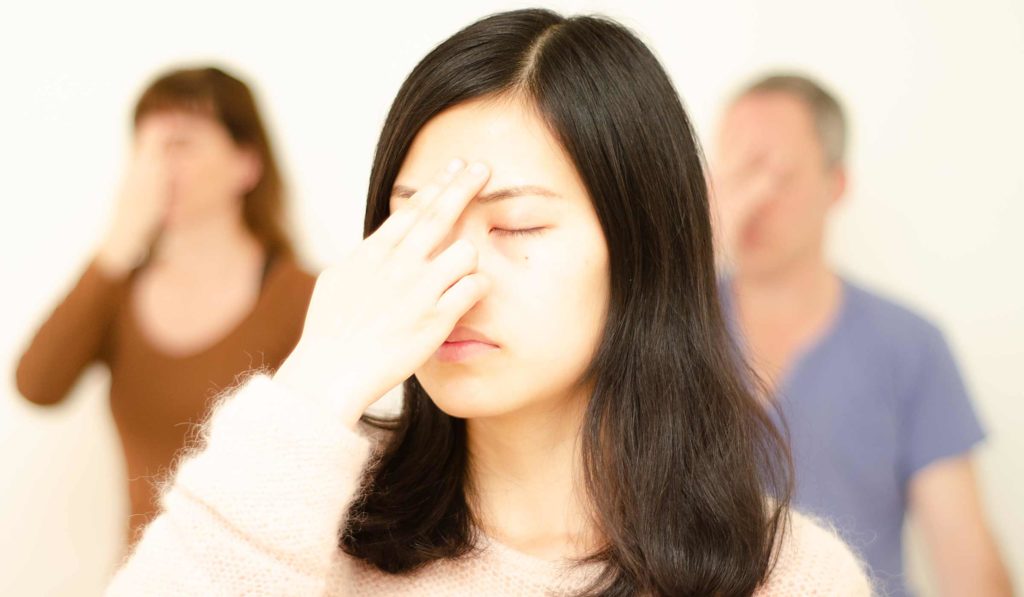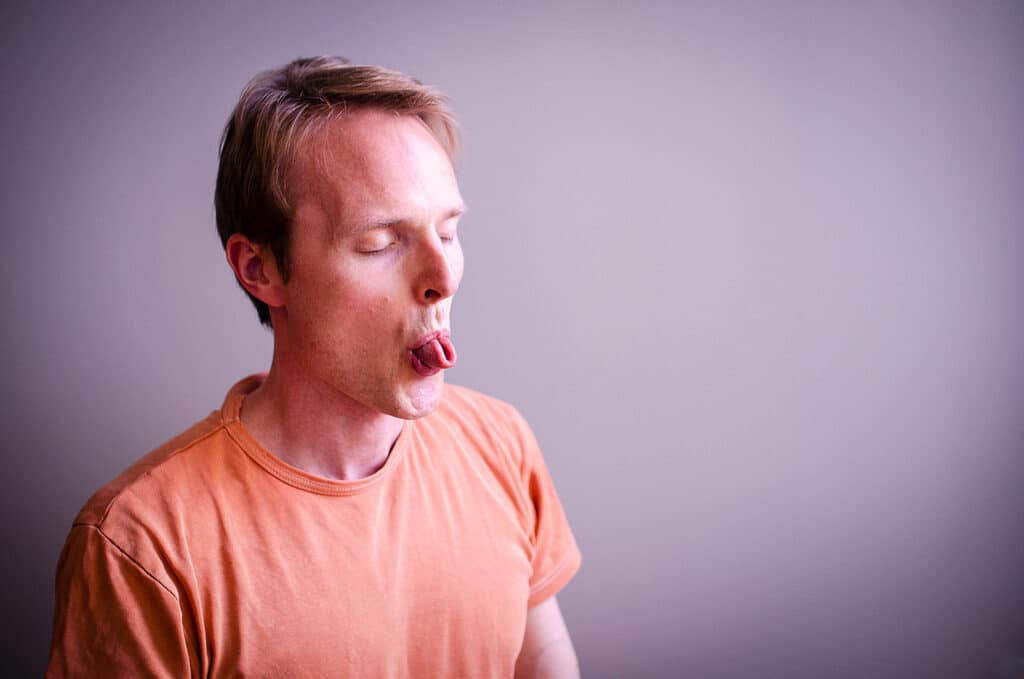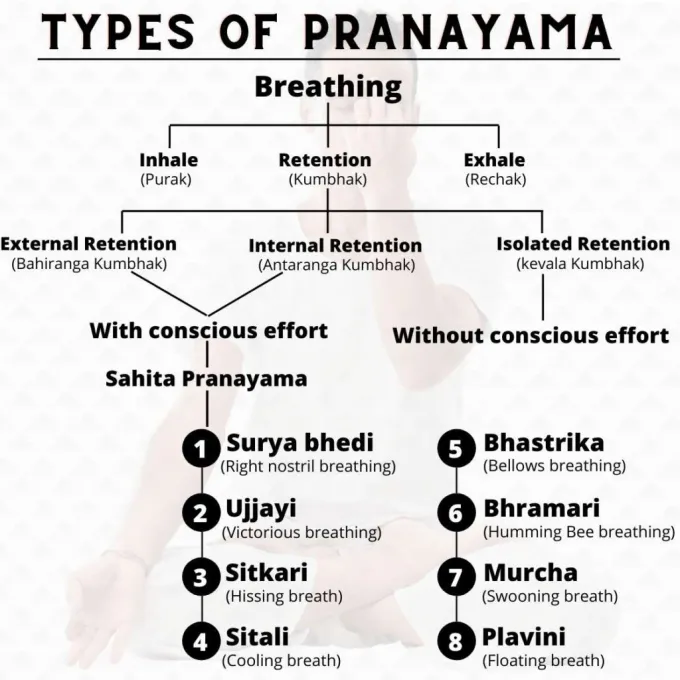How Many Pranayamas Are There: There are many types of pranayama, which are special breathing exercises in hatha yoga. But how many are truly different? In this guide, we’ll explore the basics of pranayama and discover how many unique practices exist.
How Many Pranayamas Are There?
In total, there are ten main pranayamas that are distinct from one another. Depending on how you define pranayama, you might find up to twenty different practices. Beyond this, many are just variations of the same techniques.
What Makes Pranayama Unique?
Pranayama focuses on several key elements:
- Breath Retention (Kumbhaka):
This is the most important part. Kumbhaka means holding your breath. You can hold your breath with full lungs or empty lungs. Yogis often practice this to calm their minds and boost their inner energy. - Bandhas (Energy Locks):
While holding your breath, you can use energy locks called bandhas. There are three main bandhas:- Chin Lock (Jalandhara Bandha)
- Root Lock (Mula Bandha)
- Abdominal Lock (Uddiyana Bandha)
These help direct energy flow but are not considered pranayama on their own.
- Different Breathing Styles:
Pranayama includes various breathing methods. Some involve quick, strong breaths to prepare for long holds, while others are very slow and gentle. Advanced practitioners might take minutes to complete just one breath. - Ways to Breathe:
You can breathe in through:- Both nostrils
- Right nostril
- Left nostril
- Mouth
- Breath Ratios:
You can control your breathing using specific ratios, like making your out-breath twice as long as your in-breath. - Sounds:
Some pranayama practices involve making sounds, which can range from soft whispers to strong vibrations. - Mudras (Hand Gestures):
Mudras are special hand positions that can enhance your practice. Examples include Khechari and Shambhavi mudras. - Mantras:
Traditionally, yogis used mantras in pranayama. For example, they might repeat a mantra to help time their breath retention.
List of Pranayamas
Now that we know the key elements, let’s look at the ten main pranayamas that are unique practices in yoga. Beyond these, there are other techniques that people sometimes refer to as pranayama, including different bandhas and mudras. Some are variations of the main ten.
By understanding these components, you can see how pranayama can be both simple and deep, offering many ways to enhance your yoga practice!
1. Nadi Shodhana Pranayama

Nadi Shodhana, or alternate nostril breathing, is a popular practice where you breathe through one nostril at a time. You close one nostril and inhale through the open one, then switch: close the first and exhale through the other. This continues back and forth.
The main goal is to breathe slowly, and in its full form, it includes breath retention after inhaling (and sometimes after exhaling). A common breathing ratio is 1:4:2, where the first number is the inhalation, the second is the retention, and the third is the exhalation.
Other names for Nadi Shodhana include:
- Nadi Shuddhi
- Anuloma Viloma
- Mrigi Mudra Pranayama
- Alternate nostril breathing
2. Ujjayi Pranayama
Ujjayi Pranayama, known as the “victorious breath,” involves making a soft sound in your throat while you breathe. This helps to slow your breathing and make it smooth. Advanced practitioners can slow their breath to about 90 breaths per hour.
This technique is often combined with Khechari mudra, where the tongue is folded back to touch the roof of the mouth. Some experienced yogis even extend their tongue into the nasal cavity.
Other names for Ujjayi include:
- Kundalini Pranayama
- Ocean breath
- Psychic breath
3. Bhastrika Pranayama
Bhastrika is likened to the bellows of a blacksmith because it involves quick, forceful breathing using your diaphragm. This practice is usually followed by breath retention for better results. You can do Bhastrika through both nostrils or one at a time.
Other names for Bhastrika are:
- Fire breath
- Blacksmith’s bellows
- Bellow breathing
4. Kapalbhati Pranayama
Kapalbhati is often seen as a cleansing technique rather than a traditional pranayama. It features quick, forceful breathing but focuses only on the exhalation. The retention is done with empty lungs, allowing you to use the abdominal lock along with the chin and root locks.
Kapalbhati is sometimes called the skull cleansing breath.
5. Bhramari Pranayam
Bhramari, known as the bumblebee breath, involves closing your ears and making a humming sound while you exhale. This simple practice has a soothing effect and is easy for anyone to do.
6. Murcha Pranayama
Murcha, or the “fainting breath,” involves breath retention while lying back with your gaze focused on the center of your eyebrows. This technique is mentioned in ancient texts like the Hatha Yoga Pradipika.
7. Surya Bheda Pranayama
Surya Bheda, which means “piercing the sun,” is used to energize the body by activating the Pingala nadi, connected to the right nostril. To practice, breathe in through the right nostril, hold your breath, and then exhale through the same nostril. Many yogis refer to this as the sun breath.
8. Chandra Bheda Pranayama
Chandra Bheda is the opposite of Surya Bheda. In this practice, you breathe in through the left nostril, stimulating the Ida nadi, which is linked to the moon. While not directly mentioned in the Hatha Yoga Pradipika, BKS Iyengar notes its description in the Yoga Chudamani Upanishad. It is a distinct and valuable practice.
9. Sheetali and Sheetkari Pranayama

Sheetali, or the “cooling breath,” involves rolling your tongue into a tube shape and inhaling air through it, creating a soft hissing sound. Focus on the cool sensation as you breathe in.
For those who can’t roll their tongues, there’s Sheetkari. In this variation, you smile widely and breathe in through your teeth, also experiencing a cooling effect.
10 – Plavini Pranayama
Plavini Pranayama is a bit unusual. It’s mentioned in the Hatha Yoga Pradipika, but it’s different from other types of pranayama (breathing exercises). In this practice, you swallow air and then burp it out! It’s more of a cleansing method than a real pranayama.
11 – Kriya Pranayama
In Kriya Yoga, made famous by Swami Yogananda’s Autobiography of a Yogi, there is an important practice called Kriya Pranayama. It’s mostly based on the Ujjayi breath, a common breathing technique in yoga.
What makes it special is the mental part. While breathing, you imagine the breath moving up and down your spine, and you silently repeat the word “Om” in a special way. Some people also call this type of practice spinal breathing, or in Satyananda Yoga, it’s known as pawan sanchalana, which has a similar goal.
12 – Chatura, Samavritti, and Visamavritti Pranayama
At the beginning of pranayama practice, you may learn that controlling your breath with a certain pattern or ratio is important. For example, Nadi Shodhana Pranayama uses specific timings for breathing in, holding the breath, and breathing out.
When the length of each part of the breath is the same, it’s called Chatura or Samavritti Pranayama, also known as box or square breathing. Sama means “equal.” But if the lengths are different, it’s called Visamavritti Pranayama, where visama means “unequal.”
I don’t see these as completely separate pranayamas because you can use these ratios in many other breathing exercises.
13 – Spontaneous Breath and Pranava Pranayama
The word “pranayama” has two parts: “Prana” means life energy, and “Yama” means control. So, pranayama is about controlling your life energy by controlling your breath. That’s why it seems strange to call simply noticing your natural breath “pranayama.” In many meditation practices, watching your breath is seen as meditation, not pranayama.
Swami Ramdev, a well-known Indian TV teacher, has a pranayama he calls Pranava Pranayama. It’s about being aware of your natural breath, sometimes silently repeating the word “Om.”
Another teacher, Swami Niranjanananda, also has a practice with the same name, but in his version, you say “Om” out loud, much like a practice called Bhramari. This is similar to Udgeeth Pranayama, which we will talk about soon.
14 – Deep Breathing and Dirga Pranayama
Practicing deep belly breathing can be helpful, but it doesn’t always include the key parts of yogic pranayama. Ancient yoga texts don’t talk much about full deep breaths either, so I see this more as a beginner’s exercise.
There’s a common practice called Dirga Pranayama, though I’ve never found it mentioned in any traditional yoga texts. In this practice, you lie down and take deep breaths, focusing on filling your belly, chest, and upper chest with air.
In my teaching, I call this “the complete breath,” and I use it as a warm-up before doing yoga postures. It’s useful, but it’s just a start. The benefits of classical yoga breathing exercises are much greater.
15 – Bahya Pranayama and Maha Bandha
Swami Ramdev also has a practice he calls Bahya Pranayama. I haven’t seen this name in any old yoga texts, but it might exist somewhere. However, Bahya Pranayama is exactly like Maha Bandha, a well-known yoga practice.
To do this, you use three body locks: Jalandhara Bandha, Mula Bandha, and Uddiyana Bandha all at the same time. This is sometimes called Tri Bandha.
Maha Bandha is one of the oldest yoga techniques, written about as early as the 11th century CE. You can find it in the third chapter of the Hatha Yoga Pradipika. Since it’s more about body locks (bandhas) than breath control, I think it should be considered a bandha practice, not pranayama. Yogis use it with different breathing exercises.
16 – Udgeeth Pranayama and Om Chanting
There’s another breathing exercise that comes from Swami Ramdev called Udgeeth Pranayama. It involves taking a deep, slow breath in and then chanting a long, loud “Om.” However, I wouldn’t call this pranayama. It’s really just Om chanting, so I think it should be called that to avoid confusion.
17 – Kaki Mudra Pranayama
Kaki Mudra is a special technique described in an old yoga text called the Gherandah Samhita. To do it, you make your lips into a small hole (like you’re whistling) and breathe in through your mouth. In the Satyananda tradition, you also hold your breath while puffing out your cheeks and focusing on the tip of your nose.
This exercise is different from others because it can be seen as both a mudra (hand or body gesture) and a pranayama. Traditionally, it’s called a mudra, but I think both names can work.
18 – Simhasana Pranayama

Simhasana is a yoga pose described in the Hatha Yoga Pradipika. Today, many people add a loud “ah” sound as they exhale while in the pose. Some yoga teachers now call this Simhasana Pranayama because of the breathing involved.
I don’t think this really counts as pranayama. First, the sitting position in Simhasana isn’t great for deep breathing. Second, the sound is too harsh to be part of pranayama. Instead, I would use Bhramari, a softer breathing technique, for a similar effect.
19 – Viloma Pranayama
In this practice, breathing is interrupted at intervals, going against the natural continuous flow of breath. “Viloma” means “against the grain,” and here it applies to deliberately pausing the inhalation or exhalation process. It helps to extend breath control but is more of a technique or component that can be incorporated into other pranayamas.
20 – Anuloma Pranayama
Described by B.K.S. Iyengar, this pranayama involves regulating the airflow through the nostrils by partially closing them with your fingers. It helps in lengthening the breath and is often used to refine breath control. The name “Anuloma” means “with the natural order,” as opposed to Viloma, which goes against it.
21 – Mrigi Mudra Pranayama
Also known as Vishnu Mudra, this involves positioning the hand to form the deer mudra (with the index and middle fingers folded down, and the thumb, ring, and little fingers extended) while practicing alternate nostril breathing (Nadi Shodhana). It’s essentially a specific hand gesture used during Nadi Shodhana, emphasizing the use of the fingers to open and close the nostrils.
22. Swana Pranayama (Panting Breath)
Described by Swami Niranjanananda in Prana Pranayama Pranavidya, this technique mimics the panting of an animal. The practitioner sits in Bhadrasana (a seated yoga posture) with the tongue stretched out, breathing rapidly through the mouth while engaging the abdominal muscles. The movement of the abdomen is exaggerated, using abdominal muscles to create an intense rhythm.
Swana Pranayama is a preparatory technique for more advanced pranayamas like Bhastrika and Kapalbhati, as it helps activate the diaphragm and improve abdominal control. However, it is not typically seen as a standalone pranayama practice.
23. Agnisara Pranayama (Agnisar Kriya)
This technique resembles the abdominal cleansing process of Nauli. Agnisara involves performing the Uddiyana Bandha (abdominal lock), where you exhale fully, hold the breath, and pull in your abdominal muscles, then move them rapidly in and out.
Though there is breath retention in Agnisara, it is generally classified as a kriya (cleansing process) rather than pranayama, as it is designed to stoke digestive fire (agni) and purify the body.
24. Wave Breath
The wave breath is a preparatory breathing exercise taught by Swami Janakananda, and it is done lying down. The breath is taken in fully, followed by a retention phase. During retention, the belly is pushed out and pulled in alternately in a rhythmic wave-like motion.
This exercise is particularly useful for developing awareness of the diaphragm and abdominal muscles. While it doesn’t appear in ancient texts and may not fit the traditional definition of pranayama, its uniqueness makes it a valuable breathing exercise. Like Swana and Agnisara, it is often considered a preliminary practice rather than pranayama itself.
These techniques emphasize the preparatory role of breathwork in yoga, building awareness and control in the body before moving on to more advanced pranayama practices.
FAQs For How Many Pranayamas Are There
Q1: How many pranayamas are there in total?
There are many pranayama techniques, with each school of yoga offering different variations and combinations. In classical texts like the Hatha Yoga Pradipika and the Gheranda Samhita, around 8-10 core pranayamas are typically described. However, modern yoga has expanded this number, integrating both traditional and new methods. This article includes 24 pranayama techniques, from fundamental to advanced, covering a wide spectrum of practices.
Q2: What are preparatory pranayamas, and why are they important?
Preparatory pranayamas like Swana Pranayama (panting breath), Wave Breath, and Agnisar Kriya help build awareness and control of the diaphragm, abdominal muscles, and overall breath mechanics. These techniques prepare the body for more intense and advanced pranayama practices. They are especially useful for beginners to develop strength and focus in breathing.
Q3: Is Agnisara Pranayama considered a true pranayama?
Although some refer to it as Agnisara Pranayama, most yoga practitioners and texts classify Agnisara as a cleansing process or kriya rather than a true pranayama. It involves rapid movements of the abdominal muscles during breath retention and is aimed at stimulating digestion and cleansing the internal organs.
Q4: Are there pranayamas specifically for calming the mind?
Yes, pranayamas like Nadi Shodhana and Bhramari are particularly effective for calming the mind, relieving stress, and promoting relaxation. Nadi Shodhana balances the energy channels, while Bhramari uses a humming sound to soothe the nervous system.
Q5: Are there pranayamas to increase energy levels?
Yes, pranayamas like Bhastrika (bellows breath) and Surya Bhedana (right nostril breathing) are designed to invigorate and energize the body by increasing oxygen intake and stimulating the sympathetic nervous system. These pranayamas are often practiced in the morning to boost energy levels and clarity.
Q8: What is the significance of nostril breathing in pranayama?
Nostril breathing is crucial in pranayama because it regulates the flow of prana (life force) through the nadis (energy channels). Techniques like Nadi Shodhana balance the ida (left) and pingala (right) nadis, creating harmony between the body’s energies. This nostril control helps calm the nervous system, improve focus, and balance the body’s internal rhythms.
